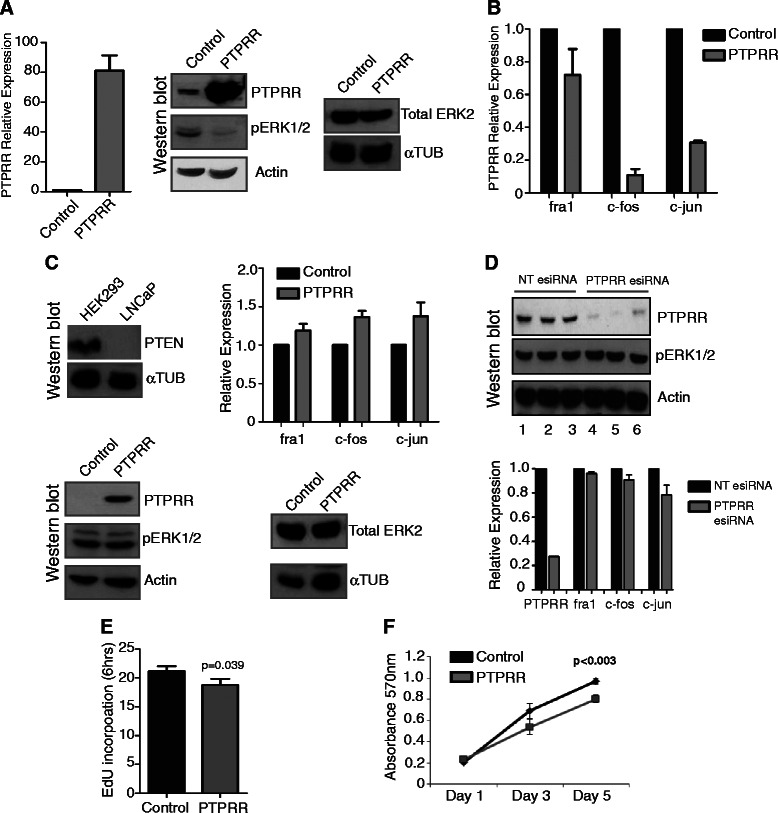Figure 3.

Expression ofPTPRRin androgen treated LNCaP cells reduces ERK1/2 signalling and decreases cell proliferation in the presence of androgens. (A) Over-expression of PTPRR in our LNCaP stable cell lines was confirmed by real-time PCR and by western blotting (A, left and middle panels). Analysis by western blot revealed that cells over-expressing PTPRR had decreased levels of phospho-ERK1/2 (pERK1/2). Actin was used as a loading control (A, middle panels). Total levels of ERK2 did not change in these cells (A, right panel). (B) Analysis of three transcription factors: fra1, c-fos and c-jun, in our stable LNCaP cells by real-time PCR in the presence of androgens revealed decreased expression levels for all three targets in cells over-expressing PTPRR. fra1, c-fos and c-jun are downstream targets of pERK1/2. (C) Western blotting confirmed our LNCaP cells to be PTEN negative and our HEK293 cells to be PTEN positive (C, upper left panels). In contrast to what was seen for LNCaP cells, there is no change in pERK1/2 levels in HEK293 cells over-expressing PTPRR. There was no change in total ERK2 levels. ɑ-tubulin was used as a loading control (C, lower left and lower right panels). There was also no change in the expression of fra1, c-fos or c-jun expression as detected by real-time PCR (C, upper right panel). (D) esiRNA mediated depletion of PTPRR in steroid depleted LNCaP cells. Despite loss of PTPRR, there is no effect on the levels of pERK1/2 (upper panel lanes 3-6) or on the expression of fra1, c-fos or c-jun (lower panel, real-time PCR). (E) LNCaP cells over-expressing PTPRR and grown in the presence of androgens, had a lower percentage of cells in S phase, as detected by EdU incorporation (p = 0.039), and also had an impaired rate of proliferation as measured by MTT assay (p < 0.003) (F).
